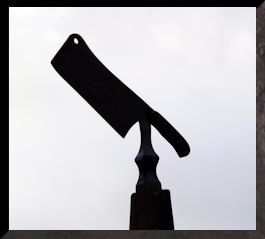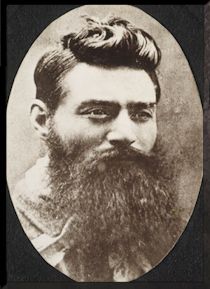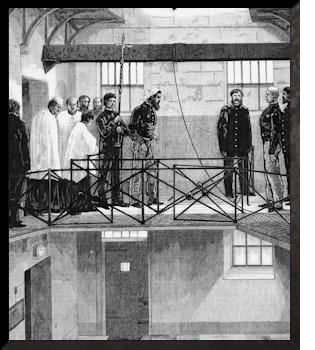|
|
|
|
||||||
|
|
NED KELLY HANGED
Ah well, I suppose it has come to this. These were the real words said by Edward (Ned) Kelly as he mounted the gallows, although myth has it that he said ‘such is life’. Myth swirled around Ned, even during his lifetime, helped along by Ned’s own letters and newspaper campaigns: James Silcock, master potter at Lithgow Pottery, was just one of many who were so entranced by the Kelly gang that he wrote about them in his diary during 1880. For some he is a folk hero, the epitome of the Australian character. For others he is a vile criminal and a cold-blooded murderer. He remains the ‘colossus of the outlaw tradition’.
Yet bushranging was a feature of life in New South Wales. Many early bushrangers were escaped convicts, who took to raiding to make a living. Joseph Gowenlock ran away from Hassans Walls and committed ‘upwards of a hundred robberies’ before he was caught in July 1838, in the Bathurst area. Edward Hall ran away from Hartley in 1838 with James Mayne and was executed in 1839. A bushranger known as McIntyre is suspected of having robbed the Mudgee/Hartley Mail at Dalhunty’s Farm, Cullen Bullen in May 1846. A man named Charles or James Mackay robbed two men on Mount Victoria on 11 September 1862 and was caught a week later near Hartley. George Brown and Paddy Thom (George Gibson) were active around Mount Victoria in 1864. Bushrangers followed the gold coaches throughout the Central West, from the 1850s. Ben Hall was the most famous. When he was shot on 5 May 1865 at Goobang Creek he was just 27, but had spent years terrorising the Central West, in ever widening circles from Forbes and Young, first with Frank Gardiner and then with John Gilbert. He was so active that horses for the first Melbourne Cup were taken by sea, in case he stole them. In October 1863 he was working the Bathurst area, targeting gold towns and homesteads around Canowindra. The famed bushranger Captain Thunderbolt (Frederick Ward), the last of NSW’s professional bushrangers, was also known to have held up the gold coach from Mudgee to Wallerawang, with his partner Mary Ann Bugg. Ned Kelly lingered in the national consciousness, partly because he was one of the last, and partly because of his skill in mobilising public opinion. Writer Susan West has said:
SOURCES Susan West, Bushranging and the policing of rural banditry in New South Wales, 1860-1880, Kew 2009
Gregory M. Cannon, The Reluctant Bushranger, Forbes: Court Press, 1982
|
|
||||||
|
|
|
|



